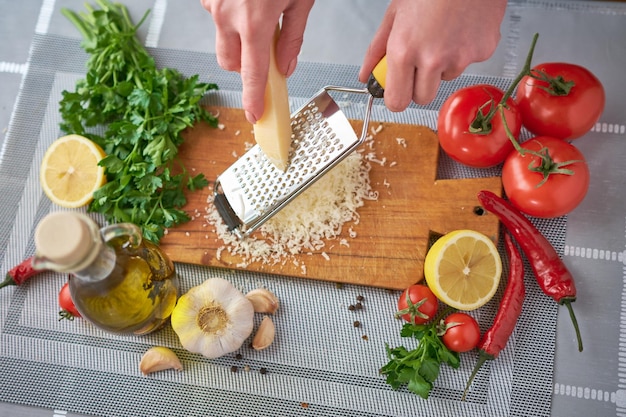In the hustle and bustle of the kitchen, it’s easy to overlook the importance of proper food handling and safety. However, taking the time to clean kitchen tools thoroughly is crucial for preventing contamination and ensuring the safety of the food we prepare. Today, we’ll shine a spotlight on one often-neglected kitchen tool—the cheese grater—and explore the best practices for cleaning it to maintain a hygienic cooking environment.
Understanding the Risks of Improperly Cleaned Cheese Graters
Cross-contamination and foodborne illnesses:
Cheese graters can harbor more than just the remnants of cheese. When not cleaned properly, leftover food particles on the grater can become a breeding ground for bacteria and pathogens. These harmful microorganisms can easily transfer to other foods, leading to cross-contamination and potentially causing foodborne illnesses.
Mold growth and allergen cross-contact:
Cheese graters are often exposed to moisture and food residues, creating an ideal environment for mold growth. Improperly cleaned graters can become a haven for mold, which not only compromises the flavor and quality of future cheese but can also pose health risks. Moreover, if you’re using a shared grater, there’s a risk of allergen cross-contact if it hasn’t been thoroughly cleaned between different types of cheeses.
Preparing for Safe Cleaning
Materials needed:
Before diving into the cleaning process, gather the necessary materials. This typically includes dish soap, a brush with non-abrasive bristles, gloves (if desired), and clean towels. It’s important to use food-safe cleaning products to avoid introducing any harmful chemicals to your kitchen utensils.
Disassembling the grater (if applicable):
Some cheese graters have removable parts, making them easier to clean. If your grater is designed to be disassembled, follow the manufacturer’s instructions to safely remove any detachable components. This will allow for a more thorough cleaning, reaching all the nooks and crannies that are difficult to access when the grater is fully assembled.
Step-by-Step Cleaning Guide
Rinsing off excess food particles:
To begin the cleaning process, rinse off the grater under warm water. This will help loosen and remove any stubborn food residues that might be stuck. For particularly challenging residue, consider soaking the grater in warm water for a few minutes before proceeding to the next step.
Using the right cleaning techniques:
Take a non-abrasive brush or sponge and apply dish soap to it. Gently scrub the grater, paying close attention to both the surface and the individual grating holes. Ensure that you cover all areas, removing any remaining food particles. Be cautious not to use harsh scrubbing materials that could damage the grater.
Paying attention to hard-to-reach areas:
Cheese graters often have nooks and crevices that are easily overlooked but can harbor bacteria or mold if not cleaned thoroughly. To tackle these areas, consider using a toothbrush or a pipe cleaner. Their smaller bristles or flexible design can help reach tight spots and ensure a more comprehensive cleaning.
Proper drying and storage:
After cleaning, it’s crucial to dry the grater thoroughly before storing it. Moisture left on the grater can promote the growth of bacteria and even lead to rust. You can choose to air dry the grater by placing it on a clean and dry surface or use a clean towel to carefully dry each part.
Maintaining Long-Term Hygiene
Regular cleaning routine:
To prevent the buildup of grime and ensure ongoing hygiene, establish a regular cleaning routine for your cheese grater. Ideally, clean it immediately after each use. This simple habit will save you time and effort in the long run while guaranteeing a safe and clean tool for your next culinary adventure.
Sanitizing the grater:
In addition to regular cleaning, periodic sanitization can provide an extra layer of cleanliness. Consider using food-safe sanitizers or homemade solutions, such as a vinegar-water mixture, to further disinfect the grater. This step is particularly important if the grater has been used for cutting raw meat or handling potentially contaminated ingredients.
Conclusion:
Properly cleaning your cheese grater is an essential part of maintaining food safety and preventing foodborne illnesses. By understanding the risks associated with improperly cleaned graters and following a step-by-step cleaning guide, you can ensure a hygienic cooking environment and safeguard the well-being of everyone who enjoys your culinary creations. Remember to establish a regular cleaning routine and prioritize cleanliness for all your kitchen tools, including cheese graters. With H2Safe food handling practices, you can savor delicious and safe meals with peace of mind.




